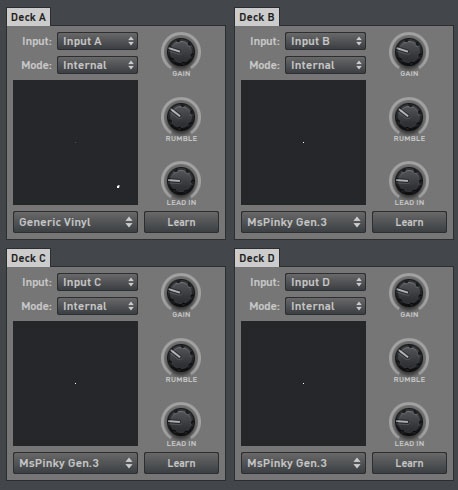

- Deckadance tutorial full#
- Deckadance tutorial software#
- Deckadance tutorial Pc#
- Deckadance tutorial windows#
PC: Windows 7, Vista, XP (SP2) Intel PIII 1 GHz or Althon XP 1.4 GHz 512Mb RAM DirectSound or ASIO compatible soundcard. Supported Audio Formats: MP3, Ogg, M4A, WMA, FLAC, AIFF, WAV (records to WAV) Price: $179 (Club Edition) / $99 (House Edition)Īvailable: Beta available now to registered users commercial availability TBA

Deckadance tutorial software#
Pre-Reviewed: Image-Line Deckadance 2 Beta DJ software With a redesigned modular interface, 4-deck support, Smart Knobs, the slick Gross Beat rhythmic effect and other enhancements, Deckadance looks to give the giants of DJ software a run for their money for a second time. After many incremental updates, the version 2 beta has now reared its head to registered users.
Deckadance tutorial Pc#
This being the case, our advice to prospective PC DJs is to try out the fully-featured demo (Mac users should keep their eyes peeled for the forthcoming OS X version), as Deckadance´s blend of familiar and forward-thinking features might very well suit you perfectly.It’s been more than six years since Image-Line launched Deckadance 1.0. What´s more, at $179, it´s also pretty good value for money. You should also bear in mind that this is very much a live performance tool: it´s not ideal for creating editable mixes.įortunately, it´s easy to set these issues aside when you´re using Deckadance, as it´s a lot of fun. Firstly, having just two decks is quite limiting - why not four? - and more GUI customisation options would be handy.

So, all the evidence so far points to the fact that Image-line has done a pretty stellar job with Deckadance, but there are one or two things we think they need to work on. It can even be calibrated to work with the those that it hasn´t been pre-configured to recognise. The software is designed to work with the most popular MIDI DJ controllers, and others can easily be assigned.īut as cool as MIDI control is, many DJs still prefer the feel of real turntables or CD decks (particularly scratch DJs), so we have to applaud Image-Line for making Deckadance compatible with a large range of timecoded vinyl and CD systems. One final and very impressive feature of Deckadance is its support for hardware control.

However, the lack of extensive sequencing facilities means that you´re slightly limited in what you can do with instruments. The first of these is a sample player: this enables you to place samples and loops into eight sample slots, or even to record them from the playback of Deckadance.Īnother feature that helps Deckadance to stand out from the DJing software crowd is its ability to host VST instruments and effects - you also get some rather excellent built-in effects. The output list we´ve just given you should have given away the fact that Deckadance has plenty more cool features in its arsenal. It´s ideal for people who prefer to use their laptop as a simple playback device and mix using a hardware mixer. In fact, Deckadance can support up to six stereo output channels - Master Mix, Deck A, Deck B, Monitor, Loop Sampler and VSTi - which is pretty impressive. Speaking of monitoring, this obviously requires a multiple output soundcard. This even enables split-cue monitoring to ensure smooth mixing every time. You´ll find 3-band EQ and kill switches on each channel, and there´s a very comprehensive monitoring section.
Deckadance tutorial full#
Unsurprisingly, Deckadance also has a full complement of mixing functions. You might love it, but punters are likely to tire of it fairly quickly. The results are very impressive, and quite useable, but we would caution against overusing this type of relooping effect. You can opt for organised mayhem or click the Randomize button, then add master effects for total sound mangling. Furthermore, with the Relooper you have a far more sophisticated looping tool: this slices the loop rhythmically and enables you to rearrange the looped audio currently playing back in the playback buffer. The loop function can be engaged at the exact moment you activate it rather than the nearest beat.


 0 kommentar(er)
0 kommentar(er)
